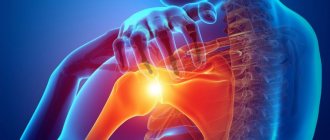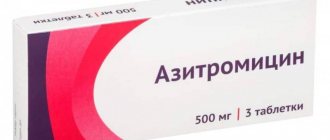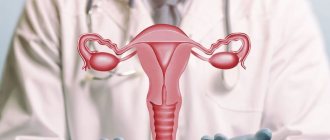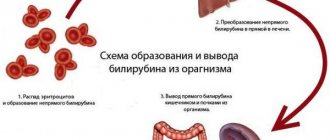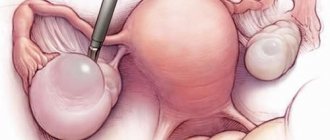Causes
The causes of the disease have not been fully investigated. It is known that the disease and syndrome are provoked by environmental factors that have a negative impact on the body. An important role is played by the predisposition of the body, problems with the regulation of B-lymphocytes in the blood.
With pathology of the exocrine glands, degenerative processes and necrosis develop, acinar glands atrophy, and the functioning of the lacrimal and salivary glands deteriorates. Due to damage to the nerve fibers, the mucous membrane dries out. Autoimmune processes spread because the body is unable to compensate for its basic needs.
Women are more likely to develop the syndrome; men account for no more than 10% of all visits to the doctor. This is explained by frequent changes in hormonal levels in the female body - during pregnancy or lactation, menopause.
Predisposing factors
- Severe hypothermia or overheating of the body.
- Overdose of drugs.
- Stressful situations, mood swings, depression.
- Development of autoimmune diseases.
- Hypersensitivity of the immune system upon contact with new substances.
- Genetic predisposition.
Pathogenesis
The autoimmune process leads to apoptosis of secreting cells and the epithelium of the excretory ducts, causing damage to the glandular tissue.
Sjögren's syndrome is associated with increased cerebrospinal fluid levels of IL-1RA, an interleukin-1 (IL-1) antagonist. This suggests that the disease begins with an increase in the activity of the IL-1 system, which entails a compensatory increase in IL-1RA to reduce the binding of IL-1 to receptors. On the other hand, Sjogren's syndrome is characterized by a decrease in the level of IL-1 in saliva, which can lead to inflammation of the oral mucosa and its dryness.
Symptoms
The symptoms of Sjögren's disease are quite varied. Most often, the salivary glands are affected, resulting in the development of sialadenitis or mumps, submaxillitis. At all stages of the disease, the patient is accompanied by keratoconjunctivitis or conjunctivitis, dryness of the mucous membrane of the eyes. For this reason, doctors recommend special moisturizing drops to help reduce the symptom. A characteristic symptom is recurrent stomatitis, atrophic or subatrophic rhinopharyngolaryngitis. The red border of the lips dries out and ulcers appear on it.
70% of patients have arthralgia - joint pain. In some cases, there is recurrent non-erosive arthritis that affects the small joints in the hands.
During the syndrome, kidney problems develop. Nephrotic syndrome, interstitial nephritis, or glomerulonephritis may occur. The epithelial tissues of the renal tubular apparatus and biliary tract are gradually affected.
The peripheral nervous system is affected, as a result of which the patient develops tunnel neuropathy, polyneuropathy, mononeuritis and other pathologies.
Forecast
Sjögren's syndrome can damage vital organs with a transition to a stable state, gradual progression, or, conversely, long-term remission. This behavior is also typical for other autoimmune diseases.
Some patients may have mild symptoms of dry eyes and mouth, while others develop serious complications. Some patients are completely helped by symptomatic treatment, others have to constantly struggle with deterioration of vision, constant discomfort in the eyes, often recurrent infections of the oral cavity, swelling of the parotid salivary gland, difficulty chewing and swallowing. Constant loss of strength and joint pain seriously reduce the quality of life.
In some patients, the pathological process involves the kidneys - glomerulonephritis, leading to proteinuria, impaired renal concentrating ability and distal renal tubular acidosis.
People with Sjögren's syndrome have a higher risk of developing non-Hodgkin's lymphoma compared to healthy people and people with other autoimmune diseases. About 5% of patients develop some form of lymphoma.
In addition, it has been found that children of women with Sjogren's syndrome during pregnancy have a higher risk of developing neonatal lupus erythematosus with congenital heart block.
Diagnostics
During the consultation, the doctor examines the patient, collects anamnesis, and carefully examines complaints. Diagnostic procedures are then determined, which may include:
- Clinical blood test. Reflects a reduced level of hemoglobin and leukocytes, increases the erythrocyte sedimentation rate.
- Blood chemistry. Shows changes in seroglycoids, gamma globulin, and total fibrin.
- Immunological reactions . Determines an increase in immunoglobulins lgM and lgG, a decrease in the number of T cells.
- Slit lamp examination . Helps identify dry mucous membranes of the eye.
- Schirmer test . Calculates the volume of tear fluid produced by the glands.
- ANA profile . Determines the presence of autoimmune pathologies that occur not only in Sjogren's syndrome, but also in other diseases.
- Sialometry . Calculates the volume of fluid produced by the salivary glands.
- Sialography . Assess the condition of the parotid salivary gland duct using a contrast agent and radiography.
- Lip biopsy. Detects changes in the number of lymphocytes in the salivary glands.
- Ultrasound of the glands. Displays the presence of stones in glandular ducts and hypoechoic areas.
Differential diagnosis allows you to accurately identify the cause of the patient’s poor health.
Sjögren's syndrome
Clinical picture:
Xerophthalmia, i.e. dry eye itself, associated with insufficient tear production, is usually the first sign of the disease. Patients complain of a feeling of dryness in the eyes, a sensation of a foreign body (“sand”), burning, itching, pain, discomfort when reading, difficulty opening the eyes in the morning, photophobia. On examination, the eyes appear irritated, dry, with dilation of the conjunctival and pericorneal vessels. A small amount of crumbly or thick viscous white or yellowish discharge is typical. In patients, tear production is reduced, up to the complete absence of tears, which is especially noticeable with severe negative emotions (inability to cry) and exposure to irritating substances (in particular, lack of tear production when peeling onions). As a rule, patients feel better in areas with a humid and cool climate.
Objective diagnosis of dry keratoconjunctivitis is possible by staining the altered areas of the conjunctiva and cornea with a 1% solution of rose bengal (the results of this technique, however, are not always interpreted unambiguously) and especially using a slit lamp, which makes it possible to reliably establish punctate and filamentous keratitis. To recognize decreased tear production, the most popular is the Schirmer test, which consists of the following. A strip of filter paper 5 mm wide is placed with its upper end behind the lower eyelid at the border of its middle and inner third. Normally, paper gets wet by at least 15 mm in 5 minutes. With lower results, tear secretion can be stimulated by inhaling a 10% ammonium chloride solution, the bottle of which is placed 15 cm below the nose (“forced Schirmer test”). A positive Schirmer test (i.e. the very fact of insufficient tear production) is not synonymous with keratoconjunctivitis sicca, especially if this test is carried out at high temperatures in a dry room.
Clinically noticeable enlargement of the lacrimal glands in Sjogren's syndrome occurs in no more than 5% of patients. Dry eyes in this disease cannot be associated only with the destruction of the parenchyma of the lacrimal glands by the inflammatory infiltrate, since surgical removal of these glands (for other reasons) does not lead to such pronounced dryness. Apparently, the lesion of all mucous glands of the conjunctival sac in Sjögren's syndrome is of decisive importance in the development of xerophthalmia. Perhaps a change in the biochemical composition of tears may play a certain role: a decrease in viscosity and an increase in water content makes it impossible to create a uniform layer of tears over the surface of the cornea.
Untreated dry keratoconjunctivitis can be complicated by secondary infection, which is primarily due to the weakening or absence of the bactericidal effect of lysozyme contained in the normal secretion of the lacrimal glands. As a result of infection (bacterial or viral), multiple complications are possible - fusion of the eyelids with the eyeball, loss of the blink reflex, ulcerative keratitis, perforation of the cornea with the threat of uveitis, secondary glaucoma and loss of vision, which is very rare.
Xerostomia , if it exists in isolation, should not be considered as a mandatory manifestation of Sjögren's syndrome. Dry mouth occurs in older people, alcoholics, smokers, and people who breathe through their mouths or take antidepressants. Temporary severe dry mouth also occurs with nervous excitement. In addition, patients with Sjögren's syndrome may experience only very modest sensations of dry mouth and therefore do not actively complain about it. Moreover, even with indisputable histological signs of the disease, the amount of saliva sometimes remains sufficient for the patient not to experience discomfort.
Severe xerostomia in Sjögren's syndrome can be very distressing. The greatest difficulties arise when chewing and swallowing solid food, and therefore patients are forced to constantly drink water. Attempts to combat dryness by sucking lemon or sour candies are successful only in the early stages. In severe cases, food particles “stick” to the gums, cheeks and palate, and patients are forced to remove them with their hands. Dryness of the pharyngeal mucosa may cause dysphagia; in some cases, a true violation of the mobility of the esophagus was noted.
Painful cracks in the lips and corners of the mouth are very common. The mucous membrane of the mouth is often irritated, its surface tissue easily peels off, and eating hot or spicy food causes pain. When drinking milk, its coagulated threads that linger on the mucous membrane of the cheeks are sometimes incorrectly interpreted as fungal lesions (which in some cases can actually complicate xerostomia in Sjögren's syndrome). Painful atrophic glossitis with cracked tongue is not uncommon. Ulcerative stomatitis is also possible. Normal accumulation of saliva at the base of the frenulum of the tongue is not observed in clinically severe cases. It is also not possible to increase salivation after massage of the parotid and submandibular glands. In most patients, enlargement of the parotid glands is unilateral and temporary, although it is possible to maintain normal size or to have bilateral enlargement. The submandibular glands are less frequently enlarged. Enlarged salivary glands are often slightly painful on palpation and are usually dense, with a smooth or uneven surface. At the same time, they do not have the stony density or nodularity characteristic of tumors. Acute pain in the glands, combined with fever, local hyperemia and hyperthermia, most often indicates the addition of a secondary infection, which is usually a consequence of the often observed dilation and tortuosity of the intraglandular salivary ducts. To judge the pathology of these ducts, as well as the degree of atrophy of the gland parenchyma, contrast sialography can be successfully used. The severity of destruction of the glandular parenchyma is also determined by scintigraphy using labeled technetium (99mTe). In this case, the level of absorption of the radionuclide by the tissues of the salivary glands and, as a control, the thyroid gland is compared. It is peculiar that the amount of saliva secreted per unit of time, which, it would seem, should characterize xerostomia especially accurately, is in fact not a sufficiently reliable indicator, since it is subject to sharp individual fluctuations. For a general judgment about a decrease in salivation, it is sometimes important to verify the small stimulating effect of acidic foods, such as lemon.
With an insufficient amount of saliva, gingivitis, bad breath, caries with toothache are common. Teeth crumble easily and previously placed fillings fall out. It should be borne in mind that drug-induced xerostomia is almost never the cause of dental pathology.
Changes in the mucous membranes of the external genitalia. The apocrine glands of the female external genitalia are often affected in Sjogren's syndrome, which is accompanied by dryness and atrophy of the vaginal mucosa. Patients complain of sensations of dryness, burning and dyspareunia. Histological examination often reveals nonspecific vaginitis. The interpretation of these changes is complicated by the fact that they are more often recorded in women during menopause and therefore may be a consequence of estrogen deficiency rather than dry syndrome as such.
Systemic manifestations of Sjogren's syndrome often present serious difficulties in their pathogenetic interpretation. They can:
- be symptoms of specific connective tissue diseases, with which Sjögren's syndrome is often combined;
- reflect the actual pathogenetic features of the syndrome in question
- be a nonspecific consequence of insufficient function of the exocrine glands with dry mucous membranes, etc.
Obviously, the first category of symptoms does not relate to Sjögren's syndrome as such and is not discussed in this section.
Skin changes. A common symptom of Sjögren's syndrome is dry skin, although patients relatively rarely actively complain about it. In most patients, increased ambient temperature, physical activity, or injections of pilocarpine cause noticeable sweating. However, in some cases this does not happen and skin biopsy reveals inflammatory changes in the area of the sweat glands with destruction of their structure. Skin. changes that reflect vasculitis (ulcers, hemorrhages) are discussed below.
Urticaria is very often observed, which is a reflection of drug allergies characteristic of Sjögren's syndrome. K. Whaley et al. They even found that allergic reactions to penicillin in RA almost exclusively occur in patients with concomitant Sjogren's syndrome.
Damage to joints and muscles. From 50 to 70% of all patients with Sjogren's syndrome have a concomitant inflammatory connective tissue disease (usually RA), which determines the nature of the joint pathology. However, among patients with primary Sjögren's syndrome, 10-15% also have arthralgia or arthritis that does not fit into the clear framework of any specific concomitant nosology. Arthritis is usually mild and transient. Despite possible recurrence, erosion does not occur. Reverse development of inflammatory changes occurs without treatment. The most commonly affected joints are the knee and elbow joints. The pathogenesis of this variant of arthritis is unknown. There is an opinion about its immunocomplex nature. An indirect argument in favor of this point of view is the frequent combination of Sjogren's syndrome and RA, each of which is characterized by a high level of circulating immune complexes and the virtual absence of dry syndrome in patients with psoriatic arthritis and other seronegative spondyloarthritis, for which the formation of immune complexes is completely uncharacteristic.
It should be borne in mind that although in most patients with a combination of RA and Sjögren's syndrome, signs of the rheumatoid process long precede sicca syndrome, the opposite relationship is also possible. Therefore, at the first appearance of articular symptoms in a patient with long-term isolated Sjogren's syndrome, the onset of true RA cannot be excluded.
Severe muscle damage in primary Sjögren's syndrome almost never occurs; there are only a few corresponding descriptions. Patients in some cases complain of mild myalgia and moderate muscle weakness, and the latter may also be associated with electrolyte disturbances and tubular acidosis. Muscle biopsy in patients with primary Sjogren's syndrome often reveals clinically asymptomatic focal myositis with perivascular lymphoid infiltration, as well as deposition of immunoglobulins and complement in muscle tissue and dystrophic changes in myofibrils under electron microscopy.
Respiratory system. Almost 50% of patients with Sjögren's syndrome report dry nasal mucous membranes. In some cases, it is significant and is accompanied by the formation of painful hard crusts and nosebleeds. Taste and smell sensations may be weakened or changed. Upon examination, atrophy of the nasal mucosa is found in many patients. Sometimes there is dryness of the vocal cords, which may be coated with viscous mucus. These changes lead to hoarseness of the voice. A sharp decrease in hearing and serous otitis media are possible due to the closure of the nasopharyngeal opening of the auditory tube by dry crusts; Removing the crusts can lead to rapid improvement.
The so-called dry bronchitis is not uncommon, in which thick mucous discharge causes a constant dry cough with difficulty in expectoration and the addition of a secondary infection. In the development of the latter, a certain importance is also attached to insufficient local IgA production. Infiltrates of the walls of the bronchioles and alveolar septa by T and B lymphocytes are considered relatively specific for Sjögren's syndrome, which can clinically manifest as symptoms of airway obstruction with cough and shortness of breath, as well as episodes of usually mild interstitial pneumonia. Mild short-term pleurisy that resolves spontaneously within 1-2 weeks has often been described. Chronic interstitial inflammatory process (fibrosing alveolitis) is relatively rare.
The cardiovascular system in Sjögren's syndrome does not undergo any specific pathological changes primarily associated with this disease.
Kidney pathology. A number of patients with Sjogren's syndrome showed hidden or obvious signs of impaired renal tubular function, manifested by tubular acidosis, aminoaciduria and renal glycosuria. The mechanisms of development of these disorders have not been fully elucidated. There is, in particular, an assumption that they are associated with chronic pyelonephritis or with increased blood viscosity as a result of hyperglobulinemia, often characteristic of Sjogren's syndrome. It is more likely that this pathology is directly related to immune reactions, since infiltration of the medullary layer of the kidneys with lymphocytes and plasma cells is found in the corresponding patients. This view is supported by the fact that tubular acidosis in Sjögren's syndrome improves after treatment with cytostatic immunosuppressants. In addition, it is noteworthy that during an autoimmune crisis of rejection of a transplanted kidney, tubular acidosis also develops in combination with peritubular lymphoid infiltration. Since the involvement of the tubules in the process can manifest itself in a decrease in the response to antidiuretic hormone, when taking an increased amount of fluid (due to xerostomia), it sometimes leads to the development of a symptom complex of diabetes insipidus.
In rare cases, patients with Sjogren's syndrome develop acute glomerulonephritis, combined with hypocomplementemia and deposition of immunoglobulins and complement in the main membrane of the glomeruli. It is important to note that this is not about concomitant SLE, in which the development of Sjögren's syndrome is quite possible, since none of these patients had antibodies to native DNA, which are highly specific for patients with lupus nephritis.
Digestive and abdominal organs. Dryness of the esophageal mucosa, which occurs with severe Sjögren's syndrome, can cause mild dysphagia when eating solid foods in some patients. Chronic atrophic gastritis with markedly reduced acidity is not uncommon, sometimes combined with the presence of antibodies to parietal cells. Acute pancreatitis has been described in some patients. No serious intestinal pathology or intestinal absorption disorders were observed.
A slight enlargement of the liver and spleen in combination with moderate laboratory signs of liver dysfunction is not so rare. Relatively often, antibodies to mitochondria, smooth muscle and membranes of liver cells are detected, which is considered a definite indication of the participation of the liver in the immune pathological process. The possibility of the development of a specific liver pathology (chronic active hepatitis or primary biliary cirrhosis) as a manifestation of Sjögren's syndrome (as some authors point out) does not seem to be proven sufficiently convincingly. In such cases, reverse cause-and-effect relationships cannot be excluded, since in these autoimmune diseases secondary Sjögren's syndrome often occurs (just as in RA in combination with dry syndrome, joint damage cannot be considered a manifestation of Sjögren's syndrome). Among the possible endocrine pathologies, one should point out histological signs of chronic thyroiditis of the Hashimoto type in approximately 5% of patients with Sjögren's syndrome. The autoimmune nature of both syndromes makes this combination quite understandable. At the same time, clinical signs of hypothyroidism are very rare.
A number of patients with severe Sjögren's syndrome experience vasculitis of medium and small vessels, manifested clinically by skin ulcers and peripheral neuropathy. It is characterized by a particularly frequent combination with the presence of Roantibodies. In a number of patients, vasculitis is combined with hyperglobulinemia and is possibly a reflection of immune complex pathology (at least in some cases). Its main symptom is “hyperglobulinemic purpura,” manifested by foci of hemorrhages on the legs. Elements of hemorrhages in typical cases are accompanied by itching and protrude above the surface of the skin, the temperature of which is usually slightly elevated. In rare cases, the rash appears confluent. Hyperglobulinemic purpura is very characteristic of the “dry syndrome”. It is believed that among patients with a combination of hyperglobulinemia and hemorrhages on the legs, 20-30% have or will develop typical manifestations of Sjogren's syndrome. Even with primary sicca syndrome, Raynaud's syndrome occurs more often than in the general population. However, its connection with vasculitis itself seems doubtful.
Changes in the central nervous system and cranial nerves are explained by most authors as vasculitis of the corresponding localization. A wide range of cerebral symptoms has been described, including nystagmus, recurrent hemiparesis and, in particularly severe cases, serous meningoencephalitis. Among the cranial nerves, the trigeminal nerve is relatively more often affected with the development of a characteristic pain syndrome. In isolated patients with Sjogren's syndrome, severe necrotizing arteritis was observed with clinical manifestations corresponding to classic polyarteritis nodosa. However, it cannot be ruled out that polyarteritis in such cases was not a manifestation of Sjögren’s syndrome, but a “concomitant” disease (like RA, etc.).
Oncological complications. Compared with the general population, patients with Sjögren's syndrome (especially primary) are more likely to develop malignant tumors, primarily lymphosarcoma of the salivary glands. It is possible that the basis for the development of this pathology is the initial increased proliferative activity of B cells, during which a high probability of mutations is created. In combination with the weakening of cellular immune reactions discussed below, this circumstance can significantly facilitate the development of tumors. Between the usual lymphoid infiltration of the salivary glands and lymphosarcoma, there is a kind of intermediate stage called pseudolymphoma. In corresponding patients, the salivary glands, lymph nodes and spleen enlarge, hyperglobulinemic purpura and benign lymphoid infiltration of the renal tissue develop. Although steroid therapy can reverse these changes, they are considered a premalignant condition. Such patients should be under targeted surveillance with early biopsies, especially in cases of rapid enlargement of the lymph nodes and spleen. Malignant transformation of the process, in addition to histological changes in biopsy specimens, may also be indicated by a decrease in previously elevated levels of serum globulins and the appearance of monoclonal immunoglobulins. Attention is drawn to the increased risk of developing lymphosarcoma after radiotherapy of enlarged parotid glands. In addition, Sjögren's syndrome is associated with a higher incidence of skin cancer.
Immunological characteristics of Sjögren's syndrome. A characteristic feature of sicca syndrome is hyperglobulinemia. It is especially pronounced in patients with primary Sjogren's syndrome, causing in some cases the clinical manifestations of hyperglobulinemic purpura and a symptom complex of increased viscosity. In most cases, the levels of several or all classes of immunoglobulins are elevated. These patterns, combined with the ability of lymphocytes from salivary gland biopsies to secrete immunoglobulins in cell culture, led to the idea of nonspecific activation of B cells in Sjögren's syndrome. This activation largely explains the high frequency of formation of the autoantibodies and immune complexes discussed below, as well as the tendency towards lymphoproliferative reactions.
Treatment
There is no standard treatment for Sjögren's disease, so doctors select supportive and symptomatic treatments. For example, to eliminate dryness of the mucous membrane, medications are selected that protect and moisturize the cornea. These include Gilan, which contains highly purified sodium hyaluronate. It creates a protective film on the surface of the eyes, which protects the mucous membrane from drying out, inflammation or irritation. In some cases, doctors select soft contact lenses.
To reduce inflammation of the lacrimal glands, the doctor prescribes drugs with cyclosporine. You can get rid of dry mouth with the help of medications that stimulate the flow of saliva. To normalize saliva production, medications with calcium are selected, and you need to drink water during meals. Since the syndrome accelerates the development of caries, it is necessary to carry out careful oral hygiene and regularly consult a dentist.
In some cases, pancreatic insufficiency is observed, for the treatment of which medications with enzymes are selected. If gastric secretory insufficiency is present, replacement therapy is used.
If the patient exhibits musculoskeletal symptoms, they are treated with nonsteroidal anti-inflammatory drugs. To stop the inflammatory process in the parotid glands, doctors select antifungal drugs and prepare a course of antibiotics.
In the later stages, there are serious complications that require the use of immunoglobulins, immunosuppressants, and corticosteroids. When glomerulonephritis, ulcerative necrotizing angiitis and other pathologies appear, clinical recommendations include plasmapheresis and hemosorption.
List of sources
- Rheumatic diseases. Ed. V.A. Nasonova, N.V. Bunchuk. M., Medicine; 1997;
- Vasiliev V.I. Sjogren's disease: clinical, laboratory, immunomorphological manifestations and prognosis: dis. Dr. med. Sci. -M., 2007;
- Nasonov E.L. Anti-inflammatory therapy for rheumatic diseases. M.: M-CITY, 1996;
- Solovyov S.K., Ivanova M.M., Nasonov E.L. and others. Intensive therapy of rheumatic diseases. M.: MIC, 2001;
- Vasiliev, V. I. Sjögren’s syndrome: a guide for doctors / V. I. Vasiliev, V. G. Likhvantseva, T. N. Safonova. - M., 2013.
Prevention
There are no specific preventive methods, since the reasons causing the development of the syndrome have not been fully studied. There are general recommendations that can reduce the likelihood of its occurrence. These include:
- Regular preventive examinations with doctors.
- Timely treatment of infections, especially ENT-related.
- Strict adherence to treatment regimens selected by the doctor.
- Elimination of frequent stress and emotional overload.
- Reducing the load on the organs of vision, digestion and speech.
- Refusal of sunbathing and visiting the solarium.
- Vaccination only if prescribed by a doctor.
Sjögren's syndrome occurs in many patients and is accompanied by a number of unpleasant symptoms. Its treatment includes taking drugs that impair the functioning of the immune system. It is possible to maintain a stable condition only with complex therapy selected by a dentist, gastroenterologist, ophthalmologist and rheumatologist. Treatment and prevention are determined only by doctors.
Prognosis and possible complications
Sjögren's syndrome does not pose a serious threat if treated correctly, but its manifestations can complicate a person's life. It is necessary to eliminate symptoms in a timely manner and carry out supportive procedures so that a person does not become disabled due to severe complications. Only through complex treatment can it be possible to slow down the destruction of connective tissue and maintain a person’s ability to work.
Complications and consequences of Sjogren's syndrome:
- secondary infection;
- mumps;
- sinusitis;
- blepharitis;
- bronchitis;
- bronchopneumonia;
- tracheitis;
- diabetes;
- kidney failure;
- thyroid dysfunction;
- circulatory disorders in the brain.
